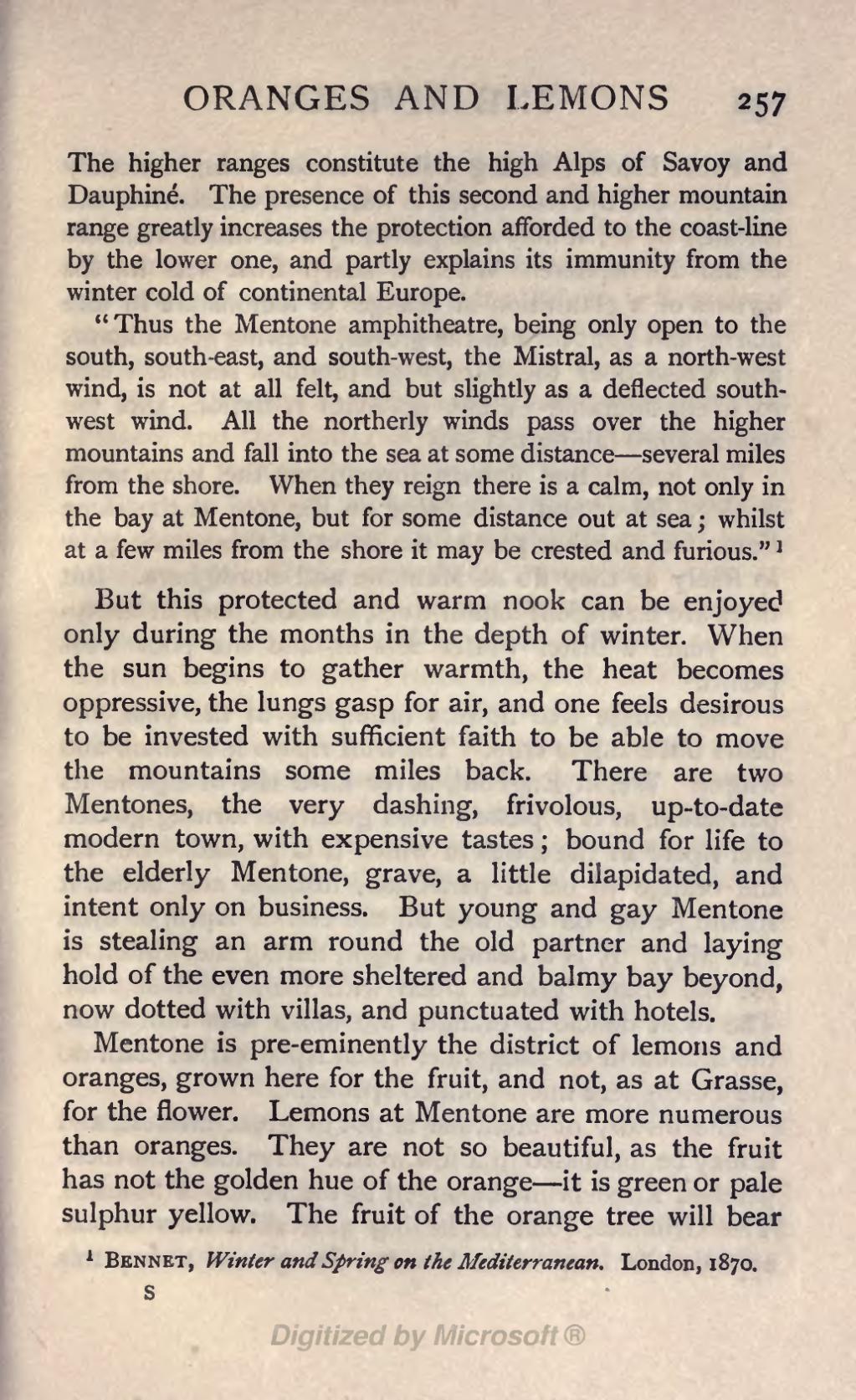The higher ranges constitute the high Alps of Savoy and Dauphiné. The presence of this second and higher mountain range greatly increases the protection afforded to the coast-line by the lower one, and partly explains its immunity from the winter cold of continental Europe.
"Thus the Mentone amphitheatre, being only open to the south, south-east, and south-west, the Mistral, as a north-west wind, is not at all felt, and but slightly as a deflected south-west wind. All the northerly winds pass over the higher mountains and fall into the sea at some distance—several miles from the shore. When they reign there is a calm, not only in the bay at Mentone, but for some distance out at sea; whilst at a few miles from the shore it may be crested and furious."[1]
But this protected and warm nook can be enjoyed only during the months in the depth of winter. When the sun begins to gather warmth, the heat becomes
oppressive, the lungs gasp for air, and one feels desirous to be invested with sufficient faith to be able to move the mountains some miles back. There are two Mentones, the very dashing, frivolous, up-to-date modern town, with expensive tastes; bound for life to the elderly Mentone, grave, a little dilapidated, and intent only on business. But young and gay Mentone is stealing an arm round the old partner and laying hold of the even more sheltered and balmy bay beyond, now dotted with villas, and punctuated with hotels.
Mentone is pre-eminently the district of lemons and oranges, grown here for the fruit, and not, as at Grasse, for the flower. Lemons at Mentone are more numerous than oranges. They are not so beautiful, as the fruit has not the golden hue of the orange—it is green or pale sulphur yellow. The fruit of the orange tree will bear
- ↑ Bennet, Winter and Spring on the Mediterranean. London, 1870.
